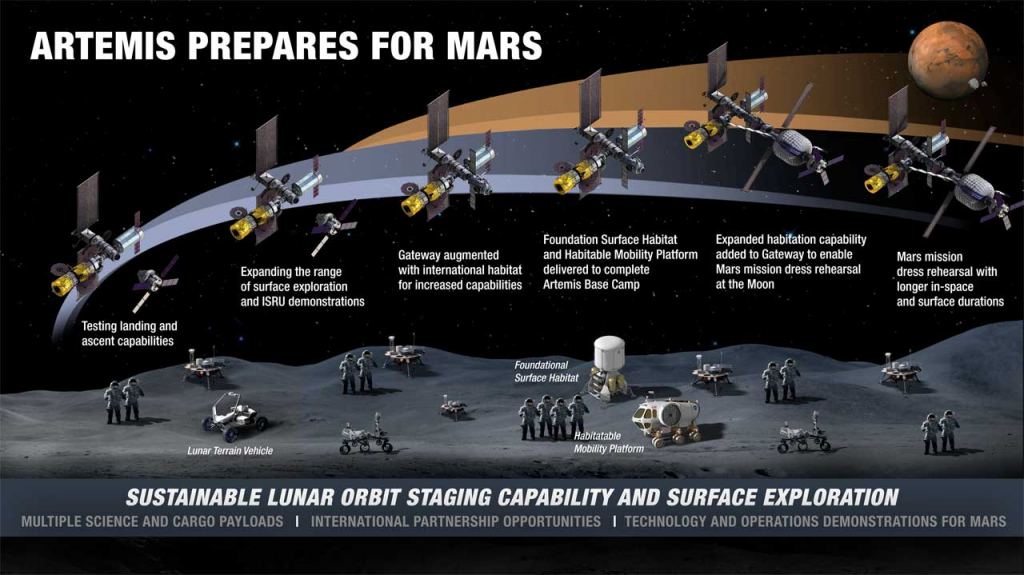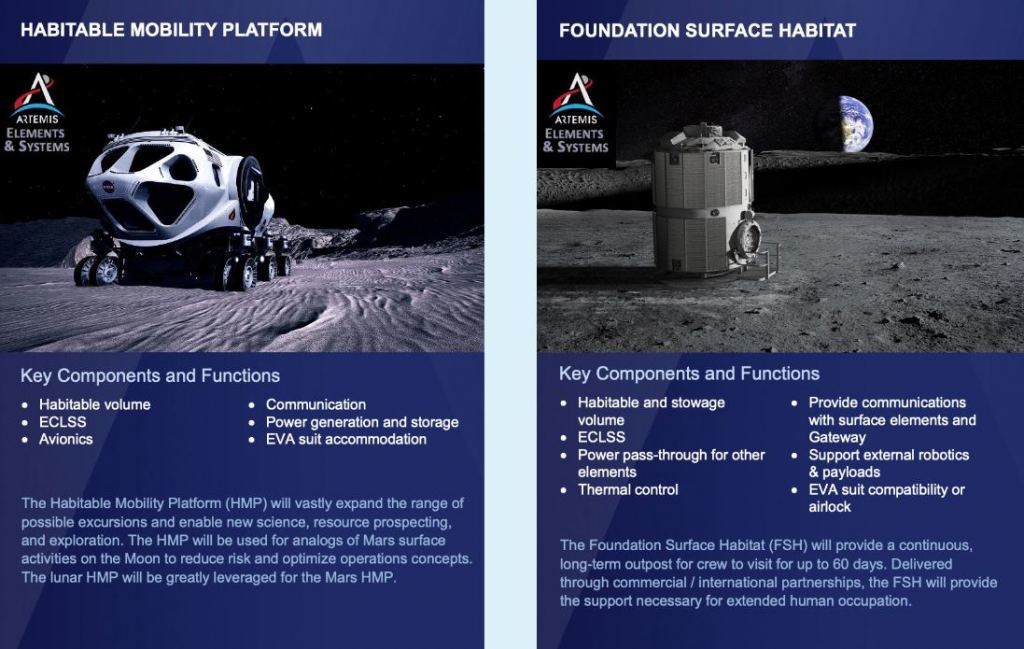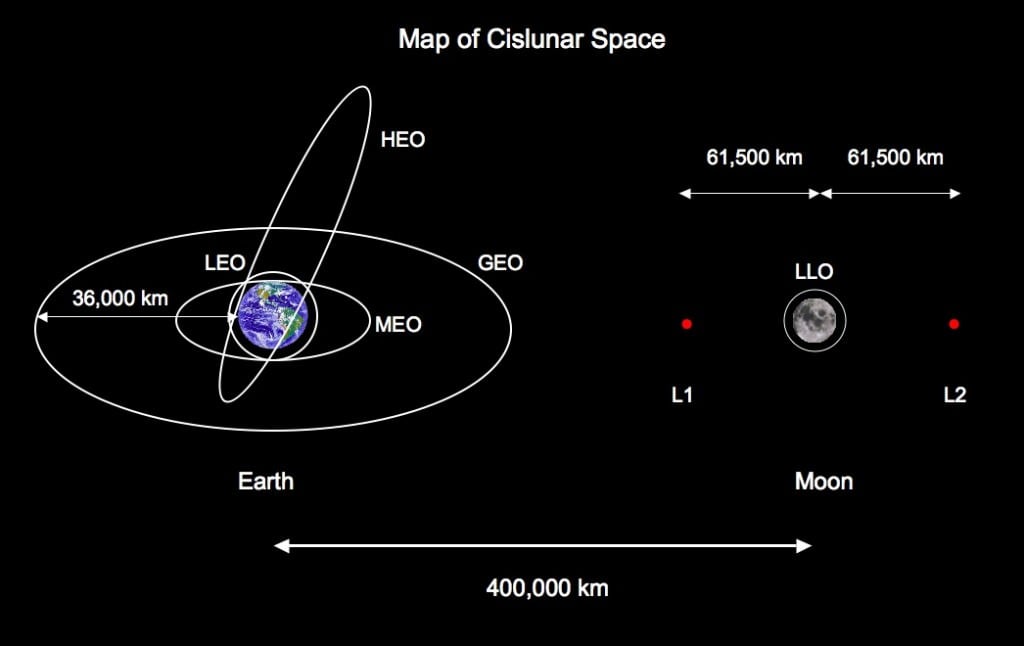Between Low Earth Orbit (LEO) and the Moon, there is a region of space measuring 384,400 km (238,855 mi) wide known as Cislunar space. In the coming decades, multiple space agencies will send missions to this region to support the development of infrastructure that will lead to a permanent human presence on the Moon. This includes orbital and surface habitats, landing pads, surface vehicles, technologies for in-situ resource utilization (ISRU), and other elements that will enable the long-term exploration and development of the lunar surface.
For all parties concerned, Cislunar space holds immense potential in terms of scientific, commercial, and military applications. The vastly increased level of activity on and around the Moon makes space domain awareness (SDA) - knowledge of all operations within a region of space - paramount. It is also necessary to ensure the continued success and utilization of the covered region. In a recent paper, a team of aerospace engineers considered the missions planned for the coming decades and evaluated the state and shortcomings of their space domain awareness.
The study was led by Brian Baker-McEvilly, an aerospace engineering graduate student at Embry-Riddle Aeronautical University (ERAU). He was joined by David Canales, an assistant professor of aerospace engineering at ERAU, and Surabhi Bhadauria and Carolin Frueh, a Ph.D. candidate and an assistant professor at Purdue University's School of Aeronautics and Astronautics. The paper that describes their findings recently appeared online and is being considered for publication by
Space Domain Awareness
Also known as "space situational awareness," SDA is essential to operations in space. As Baker-McEvilly explained to Universe Today via email:
"SDA is essentially the concept of having comprehensive knowledge of all objects in a specific region without necessarily having direct communication with those objects. It is essential for the safety and security of spacecraft as it provides valuable information on objects in their vicinity that have the potential to influence the outcome of their mission. Some general examples of the importance of SDA are the information helps avoid collisions, ensures accurate tracking information, and provides knowledge on other space activities."
As NASA states, the goal of the Artemis Program is to "create a sustained program of lunar exploration and development." Similarly, China, Roscosmos, and the ESA hope to create lunar habitats and related infrastructure to allow for a permanent human presence on the Moon. A key element of these programs is to create habitats in the Moon's southern polar region (the South Pole-Aitken Basin). These activities will require considerable support in the form of payload deliveries, and the export of lunar resources will similarly require regular missions to and from the lunar surface. Given this level of activity, SDA will be more vital than ever.
Many Plans
As per the Artemis Program, NASA intends to conduct the first circumlunar flight with a crewed Orion spacecraft (Artemis II*) no sooner than September 2025. This will be followed by Artemis III* in September 2026, the first crewed mission to the lunar surface since Apollo 17 in 1972. This will be accomplished by launching a crewed Orion spacecraft using the Space Launch System (SLS) to lunar orbit. The Human Landing System (HLS) provided by SpaceX - the *Starship HLS* - will launch separately, refuel in orbit, and then rendezvous with the Orion spacecraft around the Moon.
Once the transfer of two astronauts to the HLS is complete, they will fly down to the lunar surface and spend about 30 days conducting experiments and retrieving samples. Beyond Artemis III, NASA will begin to focus on deploying the core elements of the Lunar Gateway, which will launch in 2027 aboard a Falcon Heavy rocket. The Artemis IV mission will follow in September 2028 and will see a crew of four transfer from an Orion spacecraft to the Lunar Gateway for the first time. After that, NASA intends to send a mission a year to the lunar surface and deploy the elements of the Artemis Base Camp. These will include the following:
- Lunar Terrain Vehicle (LTV): a rover that will transport crew around the landing zone
- Habitability Mobility Platform (HMP): a pressurized rover that will enable crews to take trips across the lunar surface lasting up to 45 days
- Lunar Foundation Surface Habitat (LFSH): a stationary habitat that will house as many as four crew members on shorter surface stays
In addition, China and Russia have announced their intentions to create the International Lunar Research Station (ILRS), which would rival NASA's proposed infrastructure. The proposed timeline involves three phases. The Reconnaissance phase will conclude with the Chang'e-7 mission (launching in 2026), which will continue to explore the lunar surface around the South Pole-Aitken Basin to scout for resources and assess possible sites for a future habitat. Phase Two, Construction, will occur between 2026 and 2035 and will see the deployment of the elements that make up the ILRS.
Meanwhile, the European Space Agency (ESA) has made multiple studies and proposals for an international lunar base that would serve the same purpose as the International Space Station (ISS). Previous proposals include the ESA's Moon Village, which consisted of a facility extending beneath the surface and a dome covered in regolith that would allow access to the surface. This was followed in 2019 with the ESA and international architecture firm Skidmore, Owings & Merrill (SOM) proposing a series of semi-inflatable modules deployed along the rim of a lunar crater.
The latest concept was another collaborative effort between the ESA and the international architecture firm Hassel. Their proposal, the Lunar Habitat Master Plan, consists of a modular, scalable habitat system that can accommodate a settlement of up to 144 people. As part of their study, Baker-McEvilly and his colleagues reviewed these plans and identified two major trends. As he related.
"Two key trends emerge when looking over these missions; the importance of establishing sustainable operations and the strategic value of the Lunar South Pole. Many future missions have objectives to test new technologies that support sustainable operations on the Moon, such as water harvesting methods from Lunar regolith for astronauts, efficient landing methods to support constant movement to and from the surface of the Moon, or utilizing orbital trajectories that require little fuel to remain within. "The Lunar South Pole is a key piece of Cislunar space as it is an efficient geographic location for these sustainable operations. The South Pole possesses permanently shadowed craters that contain concentrations of water within the regolith. Also, the near-rectilinear halo orbit (NRHO) that will house Gateway spends the majority of its trajectory within line of sight of the South Pole and requires very little fuel to maintain under outside perturbations."
Getting There
Another key aspect of their study was the dynamics of the Cislunar environment and the challenges of sending spacecraft from the Earth to the Moon. These challenges are well-known, thanks to decades of sending robotic missions there, not to mention crewed missions in the form of the Apollo Program. In the coming decades, this region is expected to become rather crowded with satellites, spacecraft, the Lunar Gateway, and other orbital facilities. Things are made more complicated by the fact that any object in Cislunar space will have to contend with the Three-Body Problem. Said Baker-McEvilly:
"[The] dynamics of the Cislunar realm become challenging due to the introduction of the third body in the orbital mechanics problem. As of now, the three-body problem does not have a closed-form solution, and a spacecraft under the influence of both the Earth and Moon no longer moves in the traditional two-body Keplerian sense that many are familiar with. This causes many of the traditional methods in astrodynamics to break down, thus requiring new models and methods to solve problems."
In the end, they identified a few families of orbits that highlight the unique geometry of periodic trajectories in the Three-Body Problem, as well as orbits that may have strategic use in the future. However, as Baker-McEvilly added, these trajectories are not all-encompassing, and many more exist that have been well-documented.
Shortcomings
Upon reviewing the existing and anticipated missions that will be going to the Moon in the coming decades, Baker-McEvilly and his colleagues identified several shortcomings where SDA was concerned. They also provide recommendations on how these can be addressed. As he indicated:
"The SDA methods used to monitor objects about the Earth that rely on Earth-based sensors do not directly translate to being able to view objects in Cislunar space. The significant distance an Earth-based sensor must cover to reach areas of Cislunar space is outside the capabilities of many sensors, especially radar systems. For the sensors capable of spanning this distance, such as the Deep Space Network, they are often already overtasked and are too valuable to only be dedicated to SDA. "Another shortcoming is the challenging illumination conditions optical sensors must overcome to view objects deep in Cislunar space. Issues such as the Moon physically blocking view of missions on the far-side, or the light reflected off the Moon washing out light reflected off a spacecraft hinders the capabilities of optical sensors. As a result, there are important regions of Cislunar space that are not always in view by current sensor networks."
As Baker-McEvilly noted, researchers are investigating many approaches to address the gap in Cislunar SDA capabilities. Some possibilities include placing sensors on the Moon, improving the network of Earth-based sensors, or implementing constellations of satellite-based sensors throughout Cislunar space. In his opinion, some combination of these solutions is best suited to solving the SDA gap. He also hopes their study provides researchers, students, and those interested in lunar exploration with a foundation on the current state of Cislunar space and the issues it faces.
"The key issues highlighted across the analysis in Cislunar exploration and SDA may incline some readers to pay more attention to these points and come up with their own work that contributes to the solution or prevent similar failures from repeating themselves," he said.
*Further Reading: arXiv*
 Universe Today
Universe Today



